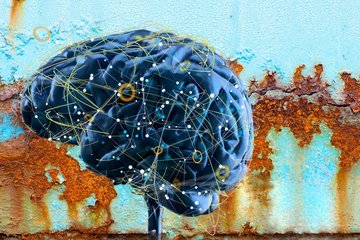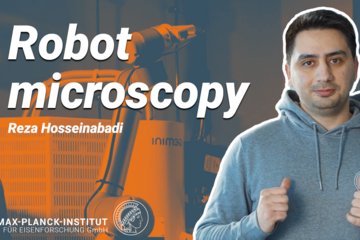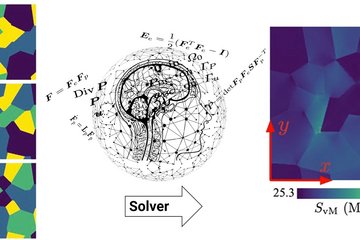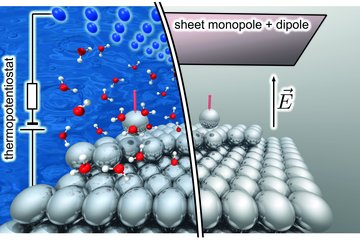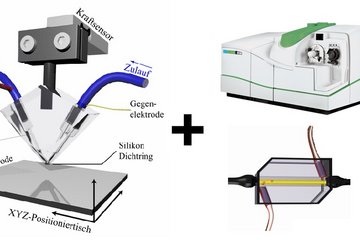All genres
21.
Journal Article
Electron microscope loading and in situ nanoindentation of water ice at cryogenic temperatures. PLoS One 18 (2), e0281703 (2023)
22.
Journal Article
Metallographic preparation methods for the Mg based system Mg–Al–Ca and its Laves phases. Materials Characterization 192, 112187 (2022)
23.
Journal Article
Gradient-enhanced modelling of deformation-induced anisotropic damage in metallic glasses. Journal of the Mechanics and Physics of Solids 167, 105020 (2022)
24.
Journal Article
Effect of composition and nanostructure on the mechanical properties and thermal stability of Zr100-xCux thin film metallic glasses. Materials and Design 219, 110752 (2022)
25.
Journal Article
Advanced structural analysis of a laser additive manufactured Zr-based bulk metallic glass along the build height. Journal of Materials Science 57, pp. 9678 - 9692 (2022)
26.
Journal Article
Size scaling in bi-crystalline Cu micropillars containing a coherent twin boundary. Acta Materialia 230, 117841 (2022)
27.
Journal Article
Dislocation-enhanced electrical conductivity in rutile TiO2 accessed by room-temperature nanoindentation. Scripta Materialia 212, 114543 (2022)
28.
Journal Article
Massive interstitial solid solution alloys achieve near-theoretical strength. Nature Communications 13, 1102 (2022)
29.
Journal Article
Local composition and nanoindentation response of δ-phase and adjacent γ′′-free zone in a Ni-based superalloy. Materials Research Letters 10 (5), pp. 301 - 309 (2022)
30.
Journal Article
Structural deviations of bulk metallic glasses in downfacing surfaces fabricated via Laser Powder Bed Fusion. Procedia CIRP 111, pp. 105 - 110 (2022)
31.
Journal Article
Superior Room Temperature Compressive Plasticity of Submicron Beta-Phase Gallium Oxide Single Crystals. Advanced Functional Materials 32 (48), 2207960 (2022)
32.
Journal Article
Dopant-segregation to grain boundaries controls electrical conductivity of η-type NbCo(Pt)Sn half-Heusler alloy mediating thermoelectric performance. Acta Materialia 217, 117147 (2021)
33.
Journal Article
Fracture resistance of AlSi10Mg fabricated by laser powder bed fusion. Acta Materialia 211, 116869 (2021)
34.
Journal Article
Stress engineering of boron doped diamond thin films via micro-fabrication. APL Materials 9, 061109 (2021)
35.
Journal Article
High strain rate in situ micropillar compression of a Zr-based metallic glass. Journal of Materials Research (2021)
36.
Journal Article
Microscale Fracture Behavior of Single Crystal Silicon Beams at Elevated Temperatures. Nano Letters 16 (12), pp. 7597 - 7603 (2016)
37.
Conference Paper
Microscale Fracture Toughness Investigation of the Caal2 C15 Laves Phase. SSRN Conference Paper Series, (2023)
38.
Conference Paper
Fracture Toughness of the Intermetallic C15 Al2Ca Laves Phase Determined using a Micropillar Splitting Technique. In: Intermetallics 2021, pp. 155 - 156. Intermetallics 2021, Kloster Banz, Bad Staffelstein, Germany, October 04, 2021 - October 08, 2021. (2021)
39.
Talk
Micromechanical Testing of Diffusion Couples to Study the Deformation of B2 FeAl as a Function of Al Content. MSE 2024, Darmstadt, Germany (2024)
40.
Talk
A Micromechanical Study on the Correlation of Composition and Properties of B2 FeAl across the Interface of an Fe–Al Diffusion Couple. ECR Day, Ruhr Universität Bochum, Bochum, Germany (2024)



